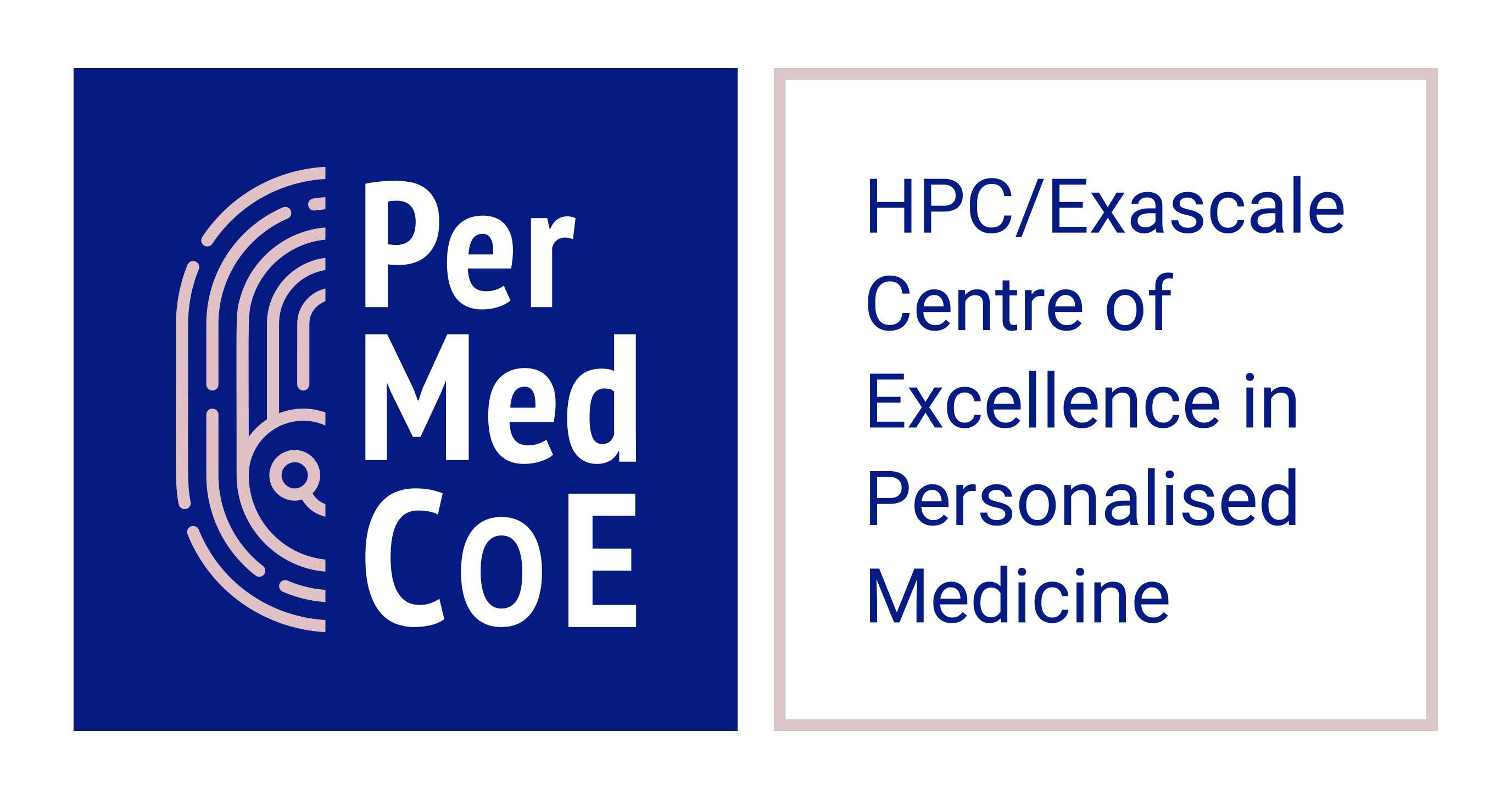Training materials
-
Tutorial
Tutorial on using existing PerMedCoE Building Blocks and workflows
 •• intermediateBioinformatics Workflows Personalised medicine Building blocks
•• intermediateBioinformatics Workflows Personalised medicine Building blocks -
Learning pathway
Version control with Git
 •• intermediateSoftware engineering Open science Version control
•• intermediateSoftware engineering Open science Version control -
Tutorial
From transcriptomics to mechanistic models of signalling
Gene expression Transcription factors and regulatory sites Signaling networks
-
Tutorial, Presentation
Materials from 'Introduction to High Performance Computing for Life Scientists' course
 •• intermediateComputational biology HPC GPU parallel computing
•• intermediateComputational biology HPC GPU parallel computing -
Learning pathway
Linux learning pathways
 • beginnerBioinformatics Linux Programming
• beginnerBioinformatics Linux Programming -
Online material, Recording, hands-on tutorial
MaBoSS: a tool for modelling biological systems
 • beginnerMathematical modelling cancer Signalling boolean modelling logical modelling
• beginnerMathematical modelling cancer Signalling boolean modelling logical modelling -
Tutorial
Tutorial on developing Building Blocks
 •• intermediateBioinformatics Workflows Personalised medicine HPC building blocks
•• intermediateBioinformatics Workflows Personalised medicine HPC building blocks -
Tutorial
Tutorial on working with computing clusters
 •• intermediateHPC
•• intermediateHPC -
Tutorial
Tutorial on using MPI with containers
 •• intermediateMPI Containers Computer Programming Documentation and help
•• intermediateMPI Containers Computer Programming Documentation and help -
Tutorial
Tutorial on CARNIVAL
 •• intermediateMolecular interactions, pathways and networks Gene expression Omics RNA-Seq Network analysis RNA-Seq analysis HPC Signaling RNAseq, transcriptomics
•• intermediateMolecular interactions, pathways and networks Gene expression Omics RNA-Seq Network analysis RNA-Seq analysis HPC Signaling RNAseq, transcriptomics
- 1
- 2